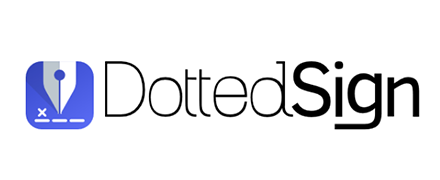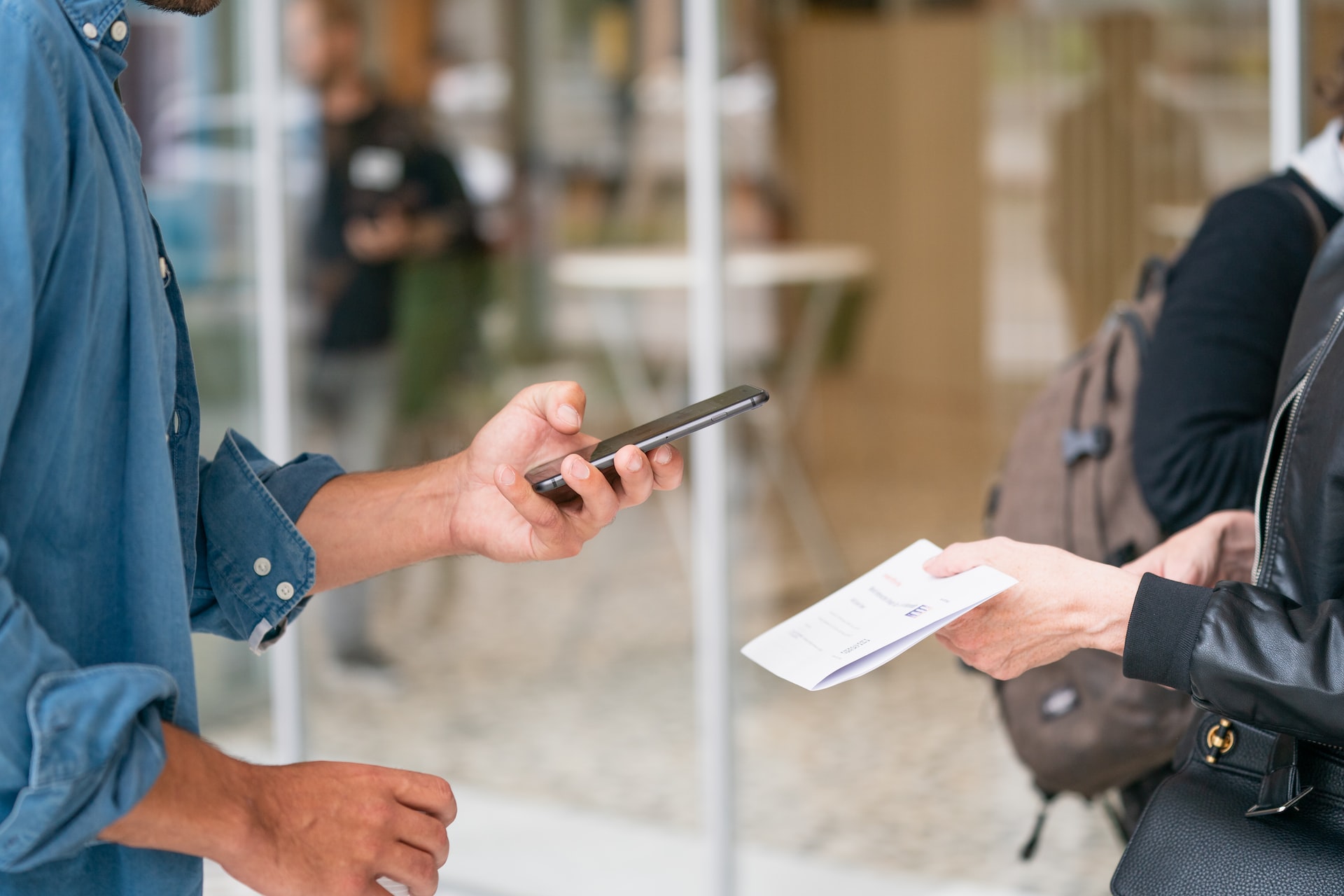How to Convert a Signature into a Digital Version
Individual users and businesses alike have unique signing needs to consider. Fortunately, with the technological advances in recent years, there’s a variety of options available for converting a handwritten signature into a digital version, from uploading a scanned signature or image file to using a comprehensive signature generator.
Read on to get a closer look at physical and electronic signatures and your options for digitizing a handwritten signature effectively.
Table of Contents
A Wet Signature vs an Electronic Signature
A wet signature is a term that describes the process of signing a physical paper document, contract, or form with pen and ink. For many years, this was the only way to capture secure, legally binding signatures. However, the accelerated growth of technology brought about electronic signatures to improve and simplify the document signing process.
An electronic signature is essentially a wet signature in electronic form. More specifically, the E-Sign Act defines this term as, “an electronic sound, symbol, or process, attached to or logically associated with a contract or other record and executed or adopted by a person with the intent to sign the record.” Similar to a handwritten signature, it enables a document signer to consent to the terms of an agreement, but often more efficiently and securely.
This broad-encompassing term is an applicable solution for a range of purposes. Some of the most common examples of electronic signatures used today include:
- A digitized handwritten signature.
- Using a PIN at an ATM.
- Agreeing to the terms and conditions of an electronic document.
- Uploading a scanned wet signature file.
- Typing your name as an email signature.
- Digital signatures with a digital certificate issued by a Certificate Authority (CA).
Are Electronic Signatures Legally Binding?
As of today, an electronic signature has the same legal validity as its physical counterpart. This is a prominent feature noted by the E-Sign Act which states that signatures shouldn’t be denied legal validity solely because they’re electronic. In fact, e-signatures are not only granted legal status in all U.S. states, but they’re also legal, trusted, and enforceable in many countries around the world.
Top 5 benefits of using digital signatures
Enhanced Security
Digital signatures employ advanced cryptographic techniques to ensure the authenticity and integrity of documents. They are highly secure and difficult to forge or tamper with, providing a level of trust and protection that handwritten signatures cannot match. This heightened security makes them ideal for sensitive transactions and legal agreements.
Legally Binding
Digital signatures have gained legal recognition in many countries, making electronically signed documents legally enforceable. This means that contracts, agreements, and other important papers signed digitally hold the same legal weight as their paper counterparts. This legal validity simplifies and accelerates business and legal processes.
Efficiency and Speed
Digital signatures eliminate the need for physical paperwork, reducing administrative bottlenecks and delays. Documents can be signed and exchanged electronically, leading to faster decision-making, shorter approval cycles, and increased efficiency. This is particularly valuable in fast-paced business environments.
Reduced Costs
Adopting digital signatures can lead to significant cost savings. Eliminating paper-based processes reduces expenses related to paper, printing, postage, and storage. Additionally, businesses can save on transportation costs associated with shipping physical documents, making it an environmentally and economically sound choice. E-commerce solution, Cyberbiz has reduced the average contract signing time from two weeks to 28 minutes.
Convenience and Accessibility
Digital signatures offer unparalleled convenience. Signatories can sign documents from anywhere with an internet connection, reducing the need for face-to-face meetings or mailing physical documents. This accessibility benefits individuals with busy schedules and those with mobility challenges, making digital signatures a versatile and inclusive solution.
Sign Anytime, Anywhere
- Secure, legal, and reliable
- Effortless document signing
- Available on all devices
Capture Signatures with DottedSign!
Start NowHow to Digitize Your Signature
When it comes to digitizing a handwritten signature to sign a digital document, there are a few common options to consider. Here are the guidelines for using each alternative:
1. Use a scanner to convert my signature into a digital image
Because this was originally the only option for creating an online signature, it’s considered a standard way to digitize a wet signature. Let’s take a closer look at the steps to follow to properly capture a physical signature and digitize it using a scanner:
1. Write your signature on a paper document — preferably using black ink and white paper for a more evident and professional-looking contrast later on. It can also help to sign the document with a larger signature than usual to improve clarity in the long run.
2. Then, you can scan the document, ensuring it’s as high-resolution as possible. Setting the maximum DPI can help you achieve this. (Note: If you don’t have a scanner, a scanner app on your phone will do the trick, but you’ll have to pay close attention to the resulting quality.)
3. With your scanner or scanning app, adjust and crop the image to remove excess white space.
4. Save the resulting image as a PNG or JPG file. Does it matter which one? The short answer is no, but it’s worth noting that PNG is considered the most widely supported file format for an electronic signature: It creates a transparent background which generates a clearer result in an electronic document.
5. Now, you can sign documents with your saved image file by simply adding them to a signature field.
Businesses may wonder whether this holds the same value and legal weight as a traditional signature on a paper document. While a signature that’s been scanned is a valid e-signature that’s widely legally accepted, it’s essential that the document signer can be clearly and unequivocally identified. This means copy-and-paste operations can quickly make it difficult to prove the right person signed the document or file — leaving the signature null and void.
2. Convert a handwritten signature into a digital format
This alternative for creating a digitized signature is only slightly different from using a scanner. However, it requires newer technology to create and customize your image file. With an iOS or Android device, here are the steps to follow:
1. Write your signature on a document. Again, using black ink and white paper is recommended.
2. Take a photo of your signature on the signed document with your mobile device.
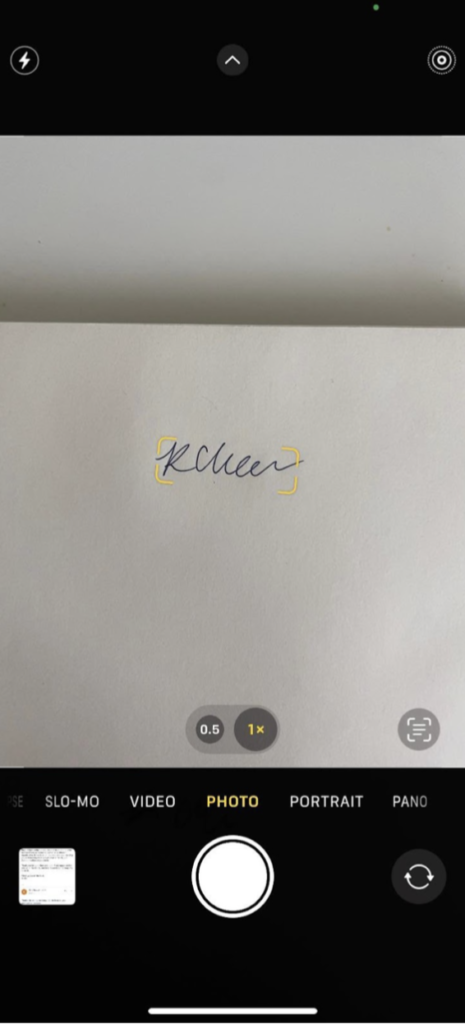
3. Crop the photo to remove excess space and save the signature image as a PNG or JPG (this feature should be available on your smartphone).
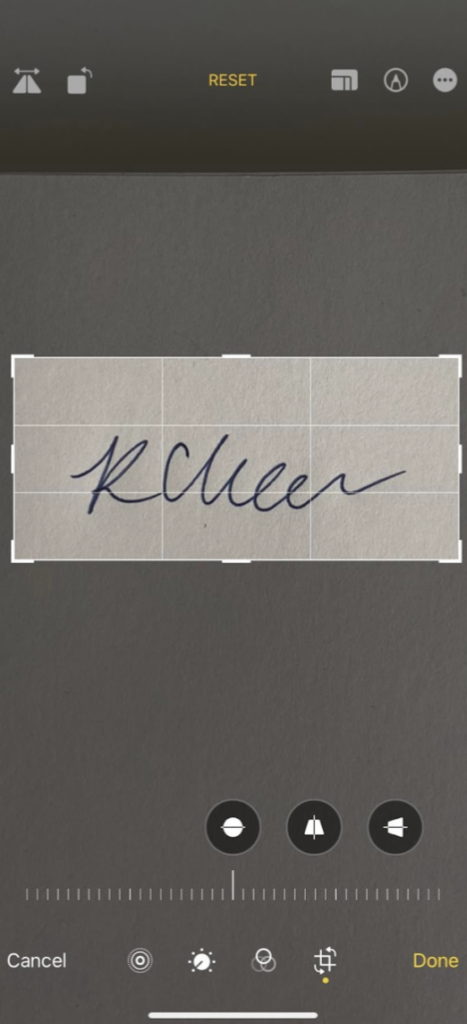
4. If you would like to remove the background of your signature, there are many free tools like Photopea that can quickly achieve it.
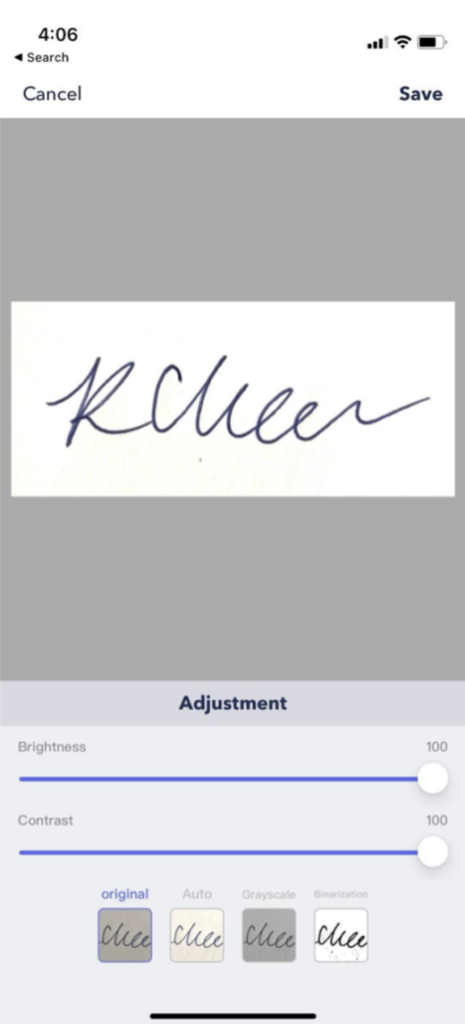
5. Sign documents as needed using your saved image file and resize it to fit the signature line at hand.
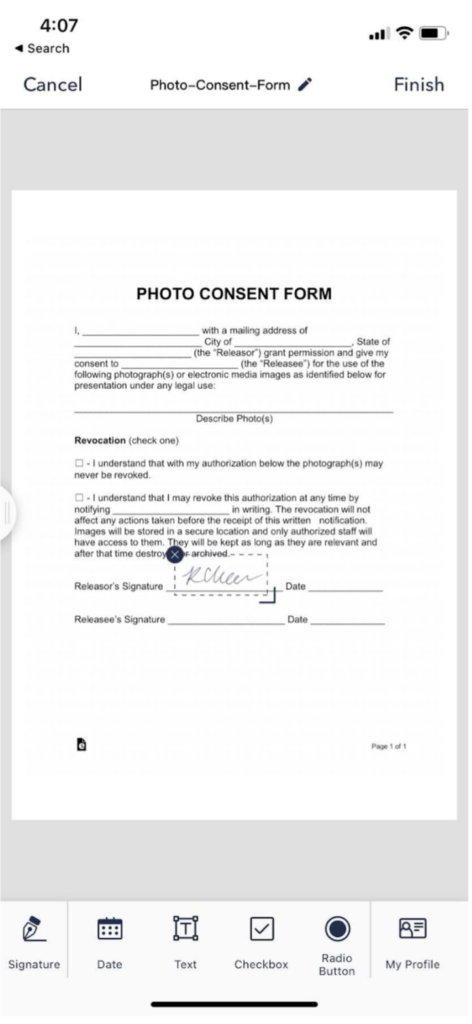
Taking a photo of your signature will be a different process than using a scanner, and you can face a few challenges to get rid of image backgrounds along the way. Signers can run into issues such as trying to minimize the blur of the photo or having poor lighting in the room, which can affect the color and quality of a signature. What’s more, similar to using a scanner, this method can make it equally as difficult to verify, beyond question, the identity of a signer.
3. Use e-signature software to convert a signature to a digital format
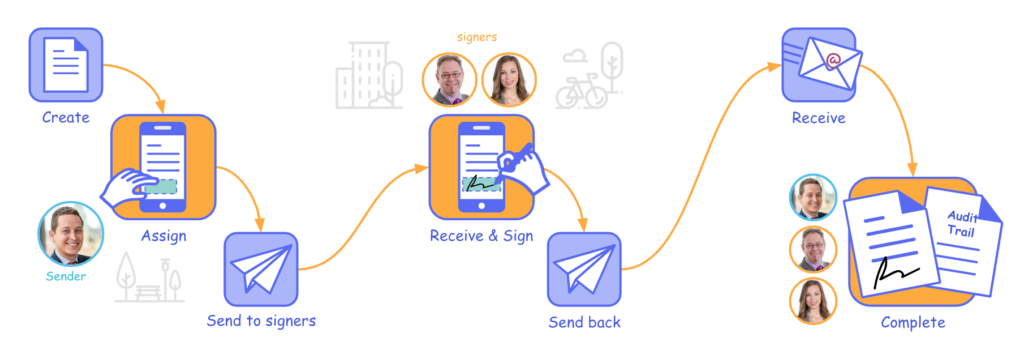
For organizations and users in pursuit of a solution that ensures the reliability of a signature and the identity of the signer, leveraging a digital signature solution is best for digitizing a physical signature. This provides a valid framework for electronic signatures.
When making use of a powerful e-signature solution like DottedSign, all you have to do is create a reusable signature, and the rest of the signing process is easy:
1. Click ‘Create New Tasks,’ and choose ‘Sign Yourself.’
2. Select your desired file. Then, click ‘Continue.’
3. Now, you can add the signature, date, text, radio button, and a checkbox you need to your document’s signature block.
4. To insert a saved signature, drag and drop the signature field and adjust the size of the field to your specifications.
5. Lastly, click ‘Continue’ to confirm signing. The completed, signed document will be displayed under the ‘Completed’ section.
The solution from DottedSign gives organizations and users convenience and a variety of valuable features to fulfill even the most complex requirements. This includes signing documents via Mobile Panel, adding pre-filled information, and using DottedSign for Gmail.
Top 5 benefits of using digital signatures
Enhanced Security:
Digital signatures use cryptographic techniques to ensure the authenticity and integrity of documents. They are highly secure and difficult to forge or tamper with, providing a robust level of document security. Combining with malware protection tools, you can achieve the maximum level of data security.
Legally Binding:
Digital signatures are legally recognized in many countries, making electronically signed documents enforceable in court. They offer the same legal validity as traditional handwritten signatures, simplifying legal processes.
Efficiency and Speed:
Digital signatures eliminate the need for physical paperwork, reducing administrative delays. Documents can be signed and exchanged electronically, leading to faster transactions and decision-making.
Reduced Costs:
Going paperless with digital signatures can result in significant cost savings, reducing expenses related to paper, printing, postage, and storage.
Convenience and Accessibility:
Users can sign documents from anywhere with an internet connection, reducing the need for in-person signings. Accessibility is improved for individuals with disabilities who may face challenges with traditional signatures.
Working With an E-Signature Service for a Simplified Signing Process
Capturing a wet signature isn’t always possible, and the process of scanning or photographing a traditional signature can be more difficult and time-consuming than necessary. With the features and convenience of modern electronic signatures, more and more businesses are opting for digital signatures over their more-traditional counterparts.
DottedSign is a smart, easy-to-adopt e-signature solution that can support teams of all sizes throughout document signing proceedings. With valuable integrations, an encrypted process, a detailed audit trail, and advanced security that works across devices, users can promote a streamlined, highly-protected signing process.
Learn more about our e-signature solution, and sign up for free to get started today.
